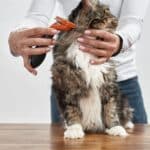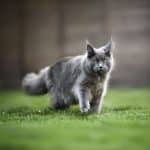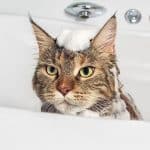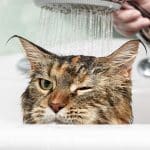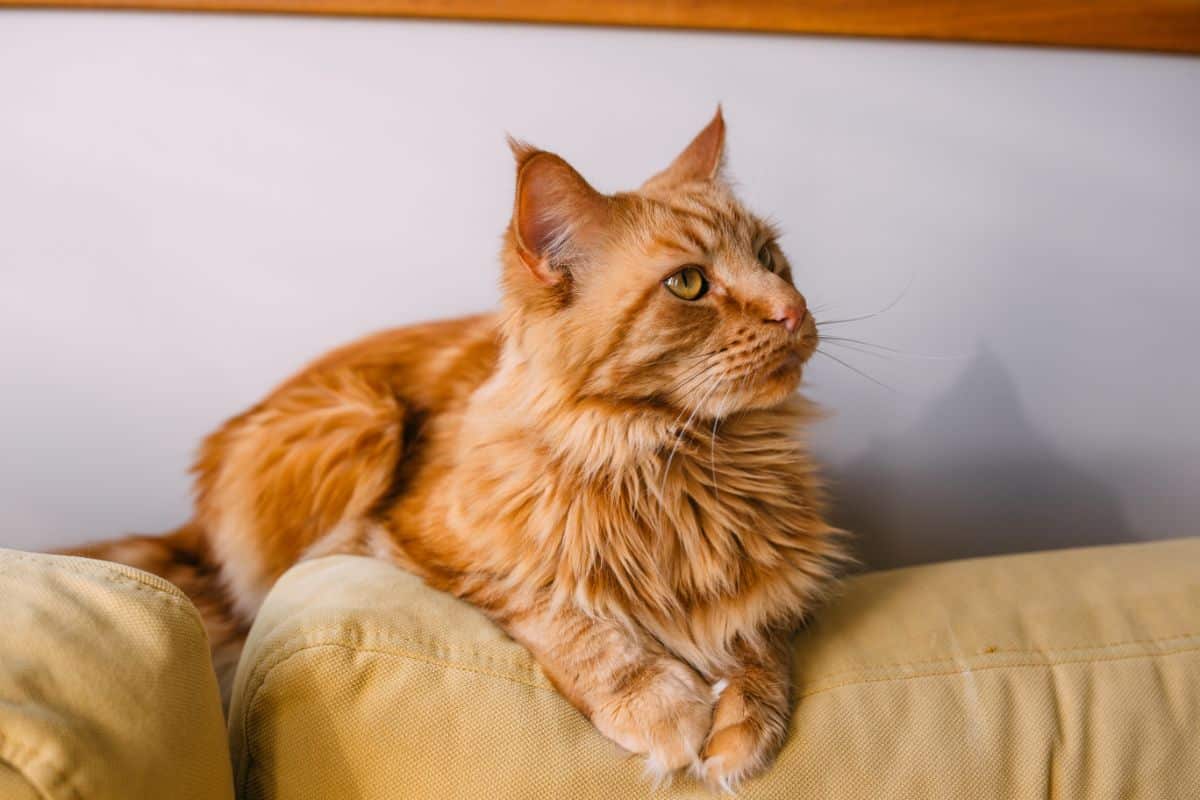
Maine Coon cats are known for their large, athletic bodies and long, luxurious fur. They can grow to between 10 to 18 pounds, and their tails are typically the same length as their bodies, if not longer. While a Maine Coon cat’s fur looks beautiful, it can be a handful to maintain. Cats with long hair are more prone to matting. Below are some ways to prevent your Maine Coon from matting and how to remove mats if necessary.
Jump to:
A Maine Coon Cat’s Coat
To prevent matting, it’s essential to understand how a Maine Coon’s coat works. Their fur has three layers: the first undercoat, the second undercoat, and their guard hairs.
The first undercoat is made of short and fine fur that traps air, insulating them from cold weather.
The second undercoat is longer than the first but is similarly fine and provides an additional layer of warmth.
The guard hairs are thick and coarse. These hairs protect Maine Coon cats from water and snow. They’re developed after kittenhood.
What Caused My Maine Coon’s Fur to Suddenly Mat?
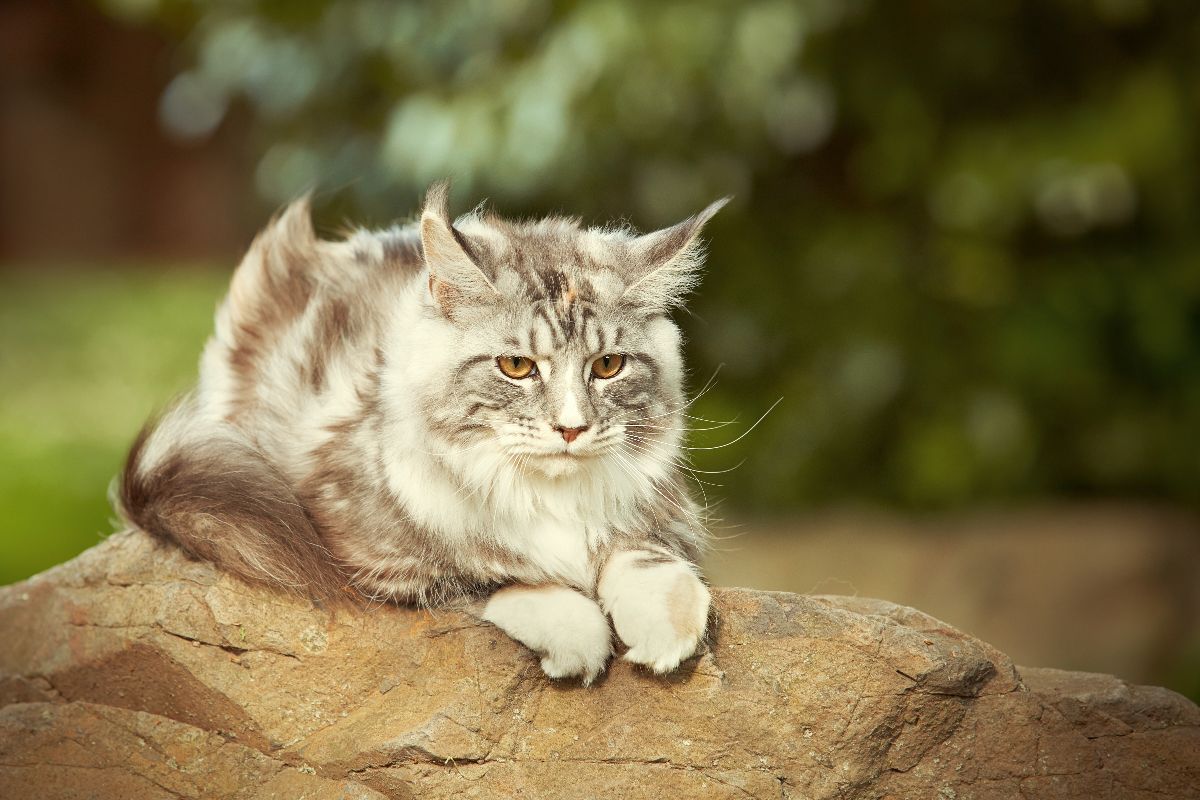
Mats typically occur when a cat is not able to groom itself regularly. Mats often form when their layers of fur tangle, creating tight knots that pull on the cat’s skin. Unfortunately, mats can be very painful for cats.
Sometimes cats aren’t able to reach every part of their body when they groom themselves, leaving mats to form. Maine Coon cats often get mats near their armpits and rears.
Matting is also more likely to occur during a cat’s shedding season. Maine Coons shed in the spring and fall to prepare for extreme weather in summer and winter. Their shed fur can get caught in their guard hairs, creating mats.
Surprisingly, cats with dental problems have acquired mats quicker than those without. Grooming becomes painful for a cat with gum disease or cavities, leading them to forgo their afternoon cat bath. If you notice more mats than usual on your Maine Coon, check their mouth and gums for signs of oral problems.
Obese cats are also prone to matted fur because they aren’t able to reach nearly every part of their body as smaller cats can. If your Maine Coon has put on a few pounds, it could lead to matted fur.
Cats who are up there in age can also have a more challenging time grooming themselves. Their joints and muscles don’t work as they used to, resulting in matted fur. Older cats need additional love and attention to keep them clean and healthy.
How Do You Prevent Matting?
The easiest and most efficient way to prevent your Maine Coon cat’s fur from matting is to brush them regularly. While cats are great at grooming themselves, they aren’t able to groom everywhere on their body.
Long-haired cats have different coats than short-haired cats, so you’ll want to use a brush built for longer fur. There are plenty of options on the market, such as slicker brushes, undercoat brushes, combs, deshedding brushes, and more.
Many Maine Coon cat owners also bathe their cats regularly to help get rid of loose fur, keeping the chance of matting to a minimum. However, most cats don’t need to be bathed periodically, so talk with your vet about this choice before committing to a bath schedule.
Dirty cats tend to develop mats more often. If your Maine Coon is an outdoor cat, it will be more prone to tangled fur. Brush your Mine Coon every time they come inside to prevent matting in the future.
How Do You Get Rid Of Mats?
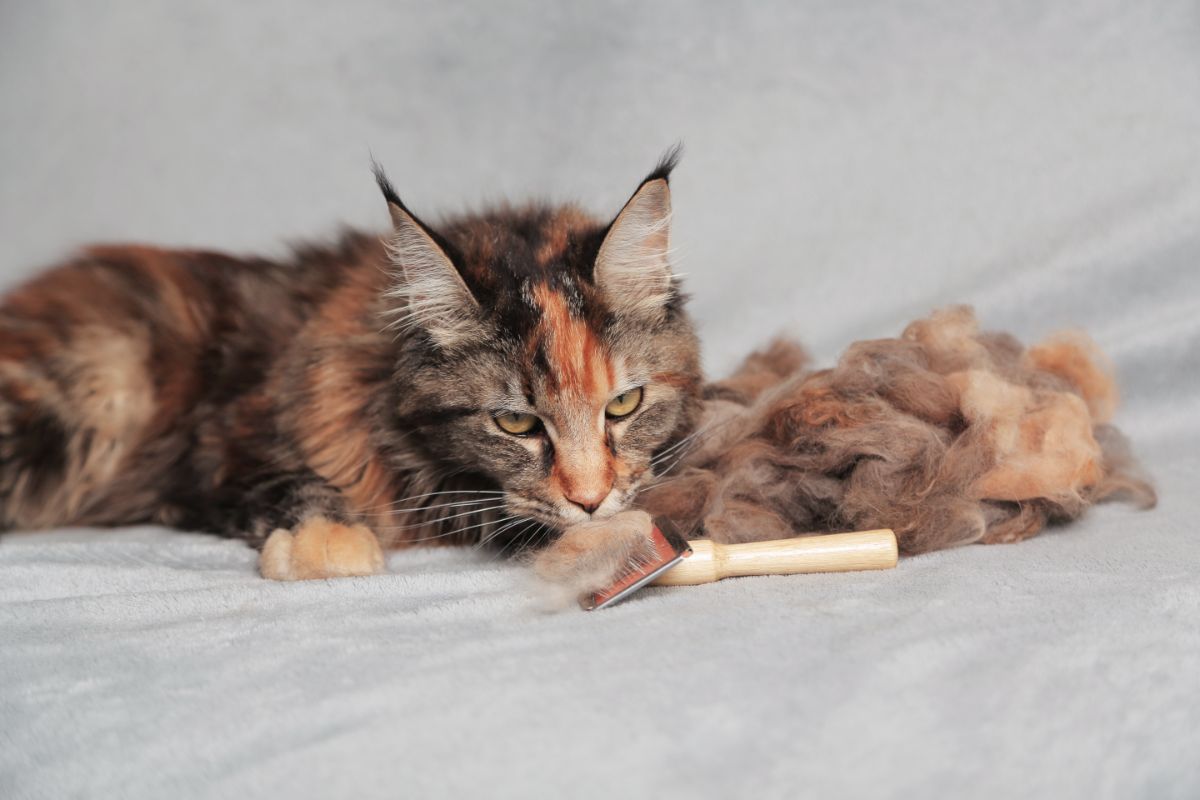
No matter how much you brush your cat, they will develop mats! When this happens, there are several options you can choose to de-mat your Maine Coon.
Dematting Brush
A dematting brush is different from other grooming tools. It’s designed to break apart tangles without pulling on your cat’s skin to an uncomfortable degree.
When using a dematting brush, start at the root of the tangled fur and pull towards the tips, pressing down on the skin to use as much of the surface area of the brush as possible. This will keep the tugging to a minimum on the sensitive skin under the mat.
Some of these brushes have a layer of razors to cut away matted fur. Be sure you know which model you’re buying to use it safely.
Greyhound Comb
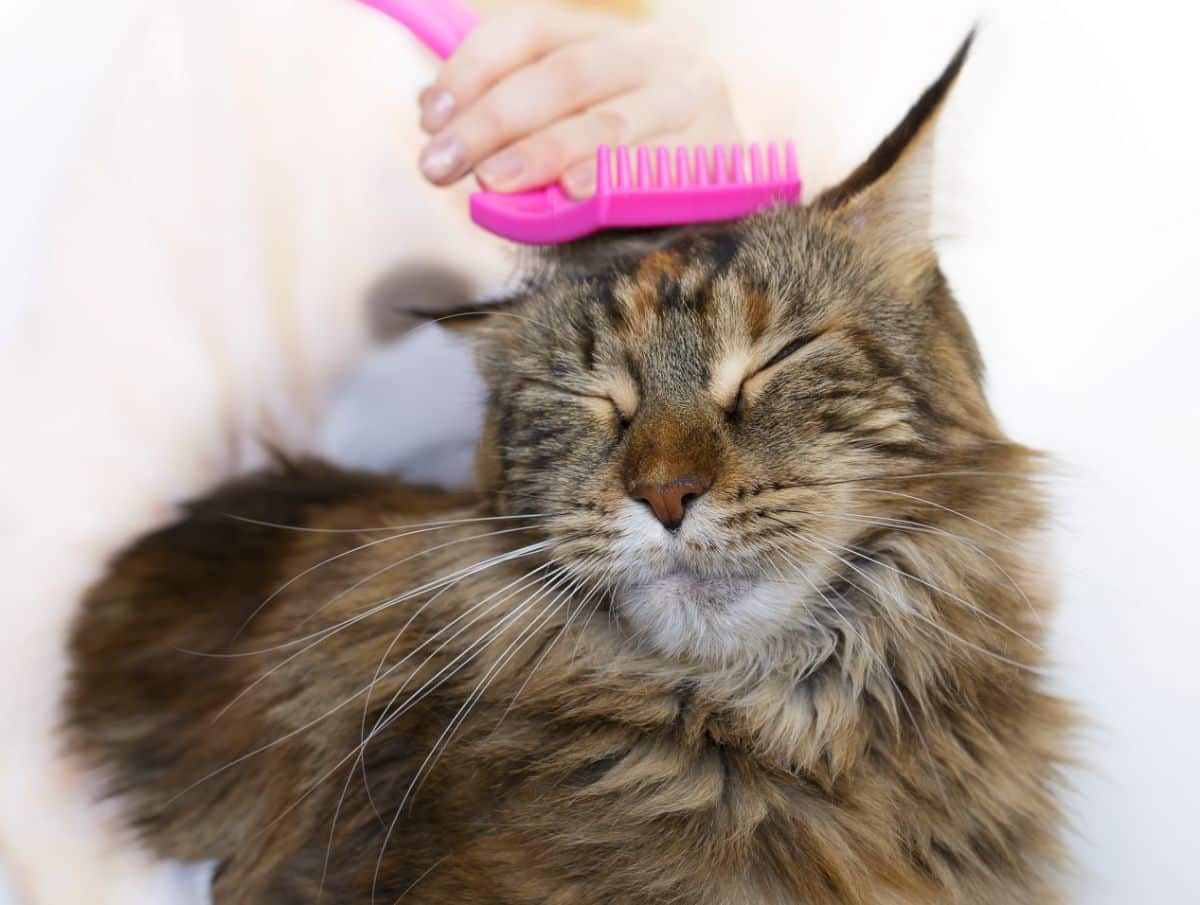
Instead of the wide surface area of the dematting brush, you can try using a greyhound comb to focus on detangling the mat. A wide-toothed comb can pull apart a mat without hurting your cat.
Undercoat Comb
The undercoat comb is perfect for a knot that’s too tight to use a greyhound comb on but not so tight that you need a dematting brush. It typically has two layers of teeth: one for de-shedding the undercoat and the other to pull apart knotted fur.
Undercoat combs can be used for standard grooming but can be harsh on cats with sensitive skin because of the multiple layers of teeth.
Ask For Help
If your Maine Coon’s fur is too matted, it may be time to ask for professional assistance.
Veterinarians can shave off matted hair when there’s no other way of removing the tangles. It’s highly recommended to have a professional shave your cat’s fur, as their skin is very sensitive and elastic. Using scissors can lead to nicks on their skin, and vets have previous experience shaving nervous cats.
Shaving off your Maine Coon’s fur may be a hard choice, but in the end, it’s necessary for their health. In severe cases, mats can lead to inflamed and painful skin, infection, and even intestinal blockages. It’s only fur, and it’ll grow back!
In Conclusion
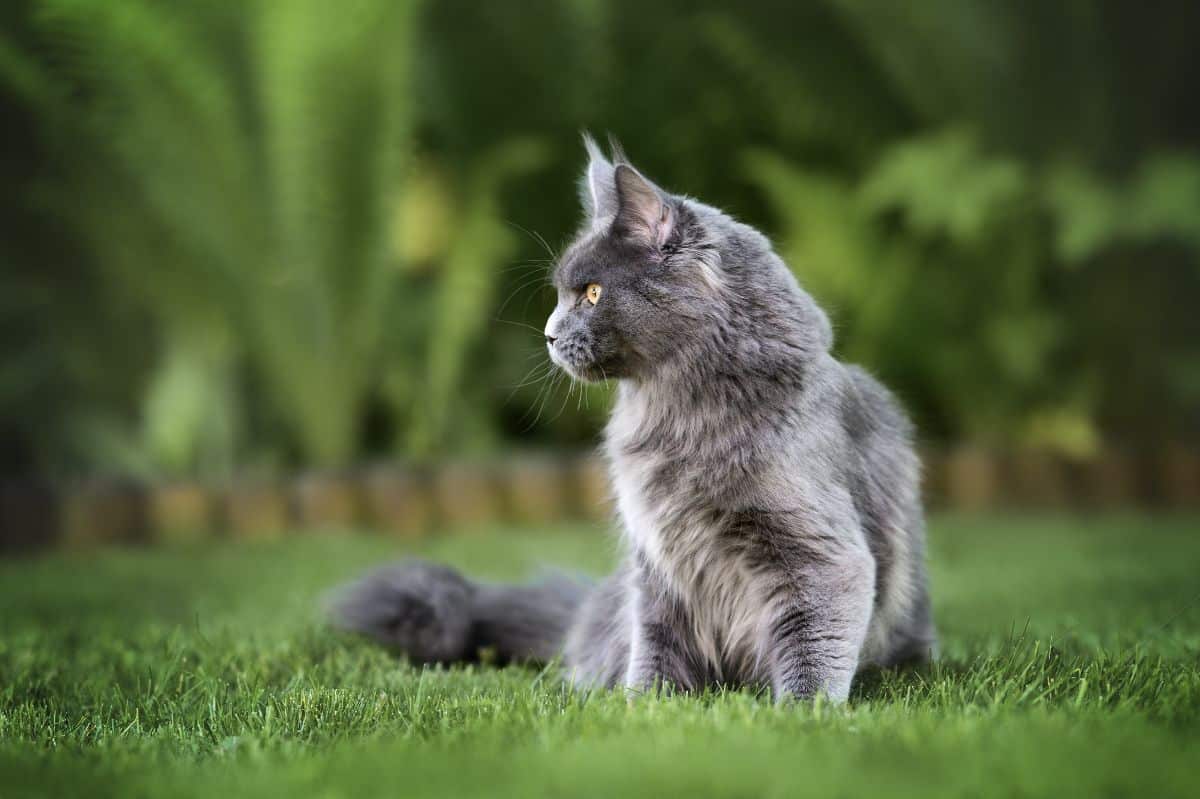
To keep your Maine Coon coat looking and feeling healthy, you’ll have to spend a little extra time each day to brush and check their fur formats. Keep an eye on your pal while they groom themselves, and note any spots they have trouble reaching. Those spots are where mats will most likely develop.

